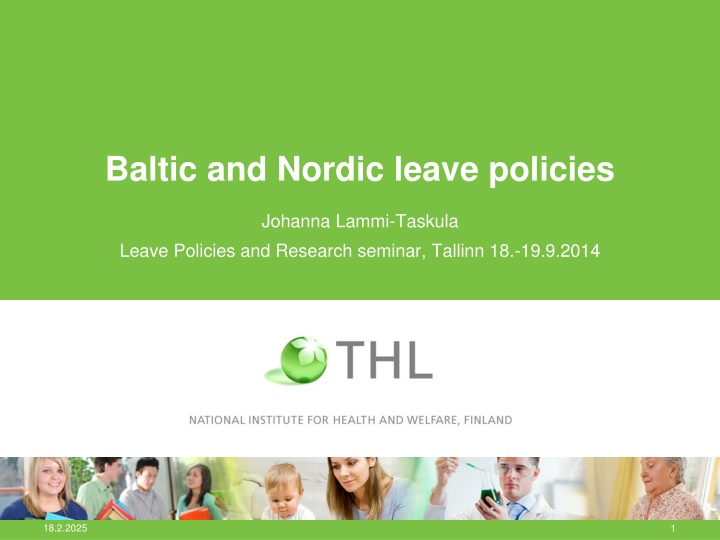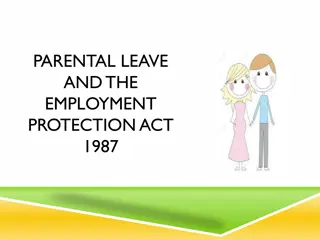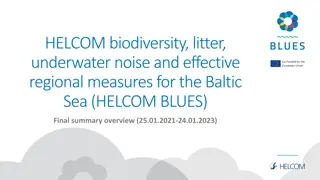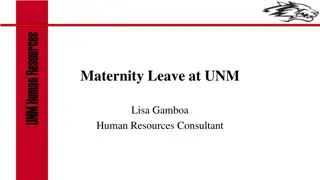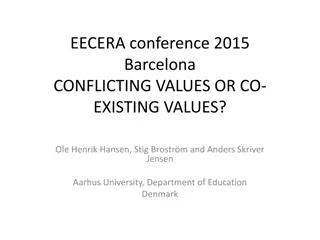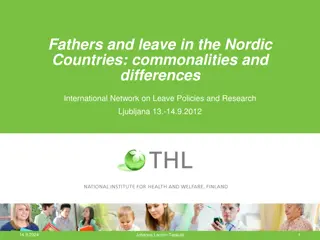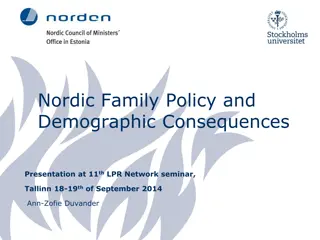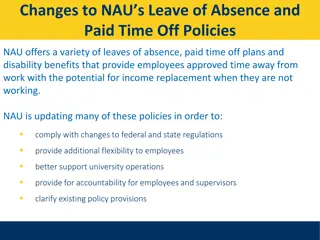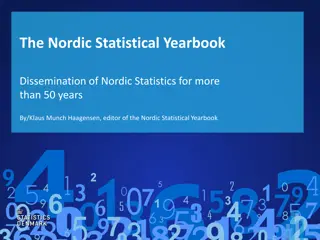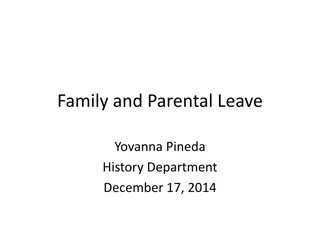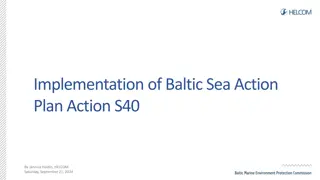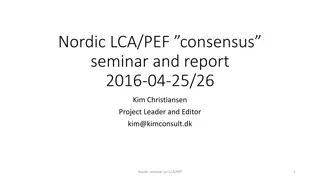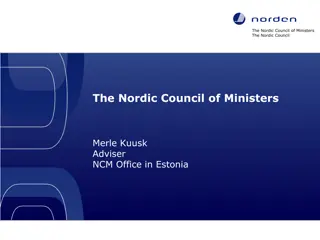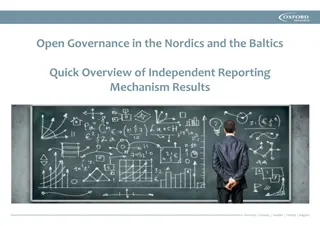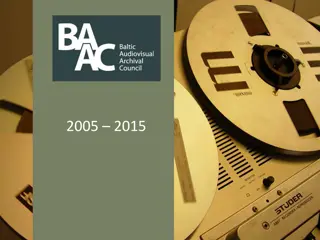Baltic and Nordic leave policies
In this study, the leave policies of Baltic and Nordic countries are compared, focusing on factors like GNI per capita, poverty rates, employment rates, part-time employment, and parental leave schemes. The research delves into the uptake of parental leave by fathers and explores the transition from the Soviet model to the Nordic model, especially in terms of gender equality and childcare policies.
Uploaded on Feb 18, 2025 | 0 Views
Download Presentation

Please find below an Image/Link to download the presentation.
The content on the website is provided AS IS for your information and personal use only. It may not be sold, licensed, or shared on other websites without obtaining consent from the author.If you encounter any issues during the download, it is possible that the publisher has removed the file from their server.
You are allowed to download the files provided on this website for personal or commercial use, subject to the condition that they are used lawfully. All files are the property of their respective owners.
The content on the website is provided AS IS for your information and personal use only. It may not be sold, licensed, or shared on other websites without obtaining consent from the author.
E N D
Presentation Transcript
Baltic and Nordic leave policies Johanna Lammi-Taskula Leave Policies and Research seminar, Tallinn 18.-19.9.2014 18.2.2025 1
GNI per capita (2012/2013) 70 60 50 40 30 20 10 0 Sweden Finland Estonia Latvia Lithuania 18.2.2025 Source: World Bank 2
Poverty rate (50 % median income , 2010) 18.2.2025 Source: OECD 3
Employment rate 2009-2013 (20-64 yrs) 85 80 Sweden/men Sweden/women Finland/men Finland/women Estonia/men Estonia/women Lithuania/men Lithuania/women Latvia/men Latvia/women 75 70 65 60 55 50 2009 2011 2013 18.2.2025 Source: Eurostat 4
Part-time employment 2013 (15-64 yrs) 18.2.2025 Esityksen nimi / Tekij 5
Leave schemes in Estonia, Lithuania, Finland and Sweden (2014) 180 160 140 parents/ unpaid 120 parents/ flat 100 weeks parents/ inc 80 60 fathers / inc 40 mothers / inc 20 0 Estonia Lithuania Finland Sweden 18.2.2025 6 Johanna Lammi-Taskula
Leave schemes if 100% equivalent salary replacement 90 80 70 60 parents / low parents /high fathers mothers 50 weeks 40 30 20 10 0 Estonia Lithuania Finland Sweden 18.2.2025 Johanna Lammi-Taskula 7
Take up of leave by fathers (%) paternity leave parental leave Estonia 38 5-10? Lithuania 5 ? Finland 84 32 Sweden 75 88 18.2.2025 Source: LPRN Country reports 2014 8
From Soviet model to Nordic model? (Karu 2011) Employment The soviet model of gender equality was rejected as it was forcing everybody to employment. Freedom of choice for mothers (not to work) was celebrated, why not for fathers? Childcare The soviet model actually enabled stay-at-home motherhood until the child was 3, but there were daycare places available. As many daycare centres were closed, there was actually no longer a freedom of choice . Fathers Fathers were given leave rights after independence, but the take-up was low and fathercare was opposed by pediatricians. What is the role of EU-membership for fathers leave rights? 18.2.2025 9 Johanna Lammi-Taskula
